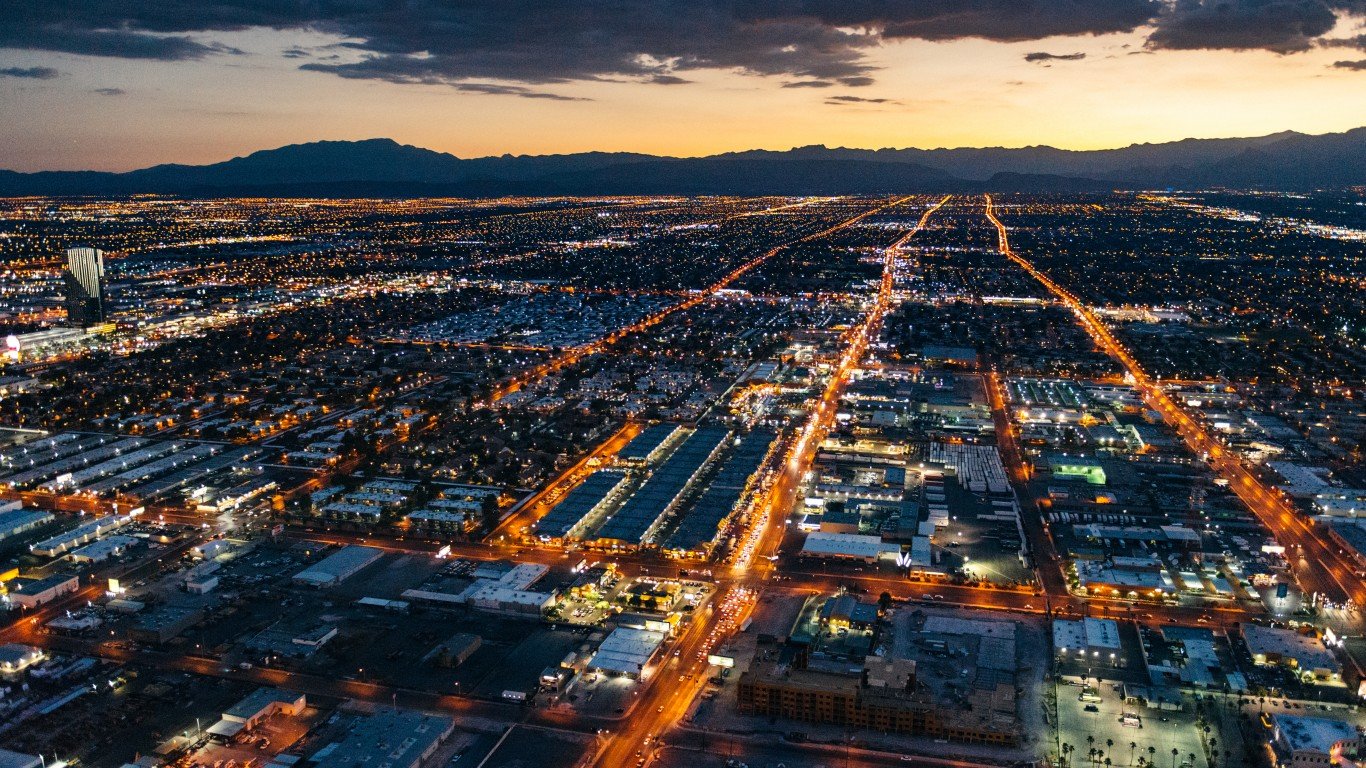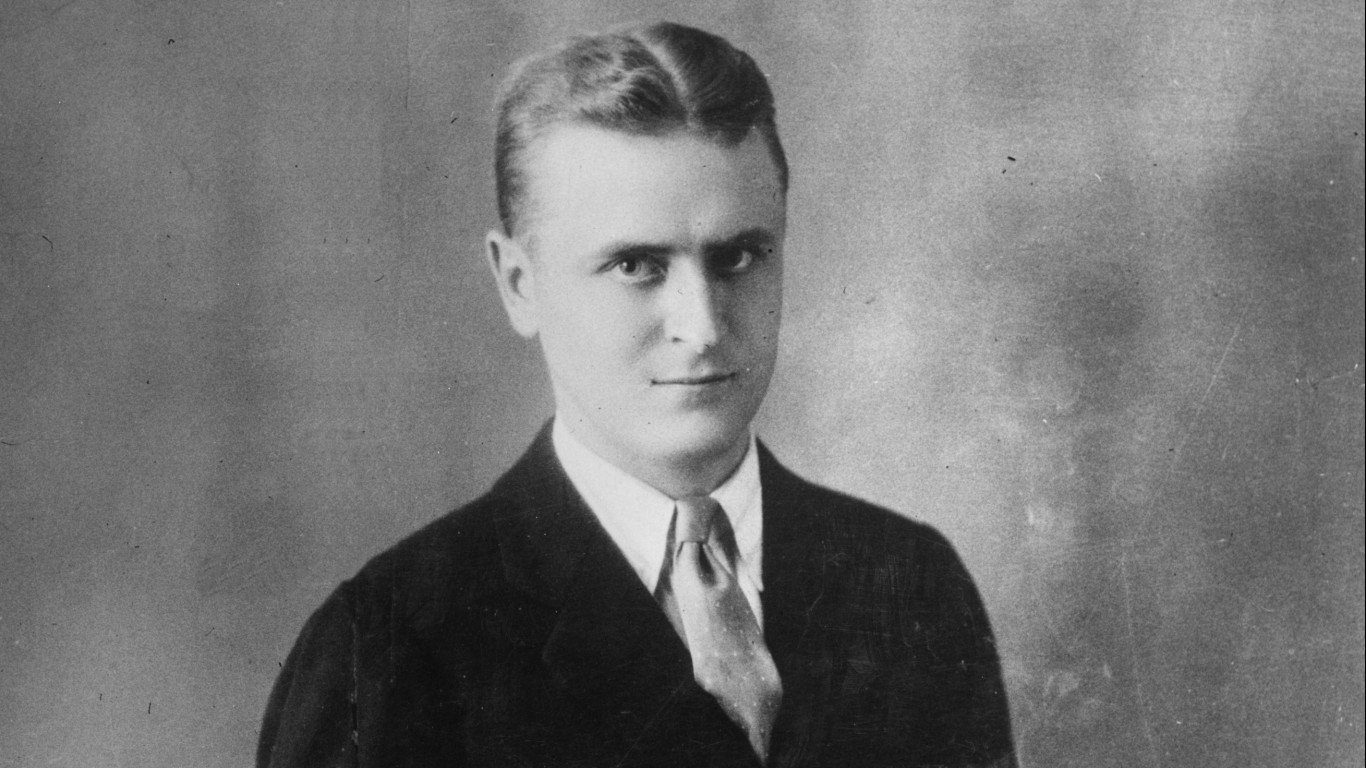

The COVID-19 pandemic sent the U.S. unemployment rate up to a post Great Depression high of 14.7% in April 2020. Though the jobless rate has since fallen back below 4%, the U.S. job market today is far different from pre-pandemic norms. One difference is that Americans are now quitting their jobs at a historic pace.
A record high 4.5 million Americans quit their job in November 2021, according to the Bureau of Labor Statistics – continuing a trend of record-breaking quit rates throughout the year. Broad explanations for what has been dubbed the Great Resignation include child care demands in the face of school closures, pandemic-related workplace risks or challenges, and a desire for a better job or one with higher pay and more benefits.
According to the Job Openings and Labor Turnover Survey report from the Bureau of Labor Statistics, 45,000 people in Nevada quit their jobs in November 2021, the most recent month of available data – a 18.4% increase from one year earlier.
The total number of monthly quits in the state is equal to 3.3% of the total workforce, higher than the 3.0% share of workers nationwide who quit their jobs in November.
Though there are exceptions, states with higher unemployment rates often have lower quit rates. Since quits do not include workers who retired, each of the 4.5 million Americans who quit in November will presumably take another job. A weaker job market, therefore, may act as a deterrent to those who consider quitting in some parts of the country, while a stronger job market may encourage some workers. The November jobless rate in Nevada stood at 5.4%, compared to the national unemployment rate of 3.9%.
| Rank | State | Nov. 2021 quits as share of workforce (%) | Total quits in Nov. 2021 | Nov. 2021 unemployment rate (%) |
|---|---|---|---|---|
| 1 | Georgia | 4.5 | 206,000 | 2.2 |
| 2 | New Hampshire | 4.5 | 30,000 | 2.1 |
| 3 | Vermont | 4.4 | 13,000 | 1.9 |
| 4 | North Dakota | 4.3 | 18,000 | 2.5 |
| 5 | Kentucky | 4.2 | 79,000 | 3.0 |
| 6 | North Carolina | 4.0 | 181,000 | 3.4 |
| 7 | Montana | 3.9 | 19,000 | 1.9 |
| 8 | Alaska | 3.9 | 12,000 | 5.5 |
| 9 | Indiana | 3.8 | 117,000 | 2.1 |
| 10 | Mississippi | 3.8 | 43,000 | 3.0 |
| 11 | Maine | 3.8 | 23,000 | 4.4 |
| 12 | Delaware | 3.8 | 17,000 | 4.0 |
| 13 | South Carolina | 3.7 | 79,000 | 3.0 |
| 14 | Alabama | 3.7 | 76,000 | 3.0 |
| 15 | Tennessee | 3.6 | 112,000 | 3.1 |
| 16 | Louisiana | 3.6 | 68,000 | 4.1 |
| 17 | Idaho | 3.6 | 28,000 | 1.9 |
| 18 | West Virginia | 3.6 | 25,000 | 2.6 |
| 19 | Wyoming | 3.6 | 10,000 | 2.4 |
| 20 | Colorado | 3.5 | 96,000 | 4.4 |
| 21 | Oklahoma | 3.5 | 58,000 | 1.9 |
| 22 | Arkansas | 3.5 | 45,000 | 2.2 |
| 23 | Florida | 3.4 | 301,000 | 3.6 |
| 24 | Wisconsin | 3.4 | 97,000 | 1.9 |
| 25 | Utah | 3.4 | 55,000 | 1.4 |
| 26 | Illinois | 3.3 | 192,000 | 4.5 |
| 27 | Nevada | 3.3 | 45,000 | 5.4 |
| 28 | Rhode Island | 3.3 | 16,000 | 4.1 |
| 29 | Texas | 3.2 | 411,000 | 4.5 |
| 30 | Arizona | 3.2 | 97,000 | 3.2 |
| 31 | Kansas | 3.2 | 45,000 | 2.6 |
| 32 | Michigan | 3.1 | 132,000 | 4.2 |
| 33 | Missouri | 3.1 | 90,000 | 2.6 |
| 34 | Oregon | 3.1 | 59,000 | 3.4 |
| 35 | Connecticut | 3.0 | 49,000 | 4.8 |
| 36 | New Mexico | 3.0 | 25,000 | 5.3 |
| 37 | South Dakota | 3.0 | 13,000 | 2.1 |
| 38 | Iowa | 2.9 | 44,000 | 2.6 |
| 39 | Nebraska | 2.9 | 30,000 | 1.2 |
| 40 | Hawaii | 2.8 | 16,000 | 5.4 |
| 41 | Virginia | 2.7 | 106,000 | 2.7 |
| 42 | Minnesota | 2.7 | 79,000 | 2.2 |
| 43 | Maryland | 2.7 | 73,000 | 4.6 |
| 44 | Ohio | 2.6 | 141,000 | 3.4 |
| 45 | California | 2.5 | 415,000 | 5.4 |
| 46 | New Jersey | 2.5 | 102,000 | 5.2 |
| 47 | Massachusetts | 2.5 | 89,000 | 4.6 |
| 48 | Pennsylvania | 2.4 | 139,000 | 4.3 |
| 49 | Washington | 2.4 | 84,000 | 3.6 |
| 50 | New York | 2.3 | 209,000 | 5.5 |
Take This Retirement Quiz To Get Matched With A Financial Advisor (Sponsored)
Take the quiz below to get matched with a financial advisor today.
Each advisor has been vetted by SmartAsset and is held to a fiduciary standard to act in your best interests.
Here’s how it works:
1. Answer SmartAsset advisor match quiz
2. Review your pre-screened matches at your leisure. Check out the
advisors’ profiles.
3. Speak with advisors at no cost to you. Have an introductory call on the phone or introduction in person and choose whom to work with in the future
Take the retirement quiz right here.
Thank you for reading! Have some feedback for us?
Contact the 24/7 Wall St. editorial team.

